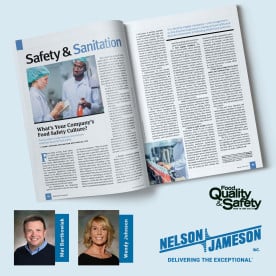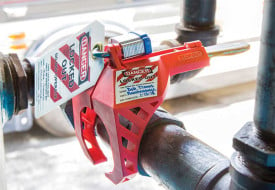For the next three months, “The Wide Line” blog will feature a series of columns authored by Dan Strongin, a well-known name in the food industry.
 In 1947, when Nelson Jameson was founded, there were 3000 cheese plants in the state of Wisconsin. As I write this, in 2012, there are 140. The same thing has happened in the rest the country, and not just in dairy, but in most industries, with the exception of computer electronics.
In 1947, when Nelson Jameson was founded, there were 3000 cheese plants in the state of Wisconsin. As I write this, in 2012, there are 140. The same thing has happened in the rest the country, and not just in dairy, but in most industries, with the exception of computer electronics.
We're all in the same boat even if it sometimes feels like it’s sinking. Survival in consolidating markets is usually bought at the price of lower margins. As “commodity” markets mature, the choice is almost always made to compete on price. Dollars profit per pound becomes pennies, and companies are forced to find ways to survive on ever-smaller, already razor-thin margins at greater volumes of production.
Food plants in 1947 operated in a far simpler environment than that of today. The computer and the Internet have sped things up so much, spitting data at us faster than we can swallow it; I don't need to tell you! Just look at how logistics has changed. The food economy now depends on exports, not just imports. Who would have thought, fifteen years ago, that would be the case in today’s market?
And the icing on the cake is the burden of requirements to keep up with, including: safety audits, environmental standards –the challenge of keeping up with all the forms, all the information, and the rapid pace of change, and the ever increasing complexity of choosing the best possible product. Remember, you also still need time to make that product, and to figure out how to make a profit from it!
All of you know this, but what you may not know is according to the Bureau of Labor standards, only a fraction of businesses are profitable even after a decade in business. It’s tough, and there is little room for error.
There is a silver lining in all of this, if it were easy you have a lot more competitors. No one can afford any longer to manage by shooting from the hip, or going with his or her gut. In the old days, you could get away with simplistic notions like buy low sell high. Today, buying on price alone will put you out of business. Have I lost my mind? How can cost-cutting put you out of business? We need real knowledge to survive, to understand business in new, more effective ways.
Most people talk about external profit and internal cost. That's okay! What about internal profit, and external cost? For instance, according to the Small Business Administration, and its going to upset you, a sudden influx of new business beyond what your facility is capable of handling comes well before lack of sales on the list of why businesses fail. An example of internal profit is the increase in cash flow created by NOT carrying the extra inventory needed to make a minimum purchase that guarantees the lowest price. Buying from a one-stop provider like Nelson-Jameson, where they sell mixed pallets, have frequent deliveries and can ship to you LTL, can assist in building and maintaining internal profits.
Why is this an internal profit? The simple fact is that everything is connected and everything has a price. The dollars you tie up in inventory cannot be used to purchase raw material. Since you need raw material, money must be brought in from elsewhere, most often from a line of credit. That credit has a price. As we will see soon in an upcoming post, there can be a huge difference in profit on the same dollar invested. Next week, we’ll continue the discussion a bit more about the dangers of cost cutting, and how Nelson-Jameson can help your business stay afloat.





